In a world where “all TVs are the same”, Philips has managed to stand out with Ambilight, an RGB light that is projected against the back wall and changes colors according to the content of the TV screen. In practice, this makes the picture feel a little bigger than it really is, while the TV pictures in a dark room do not provide as tiring contrast to the eyes. Something you can not least notice with bright HDR content.
We were impressed by the most affordable 2019 model OLED804, which we tested in a 65-inch size. The top model Philips 65OLED984 tested here also came in 2019, and the image quality is identical to its cheaper sibling.
Two things: Firstly, the OLED984 has a four-sided Ambilight, ie it also has RGB light along the bottom of the TV, where the little brother only has light along three of the sides. But even more important is the sound. 984 has a built-in soundboard from Bowers & Wilkins, and tries with this on “the world’s best TV sound”.
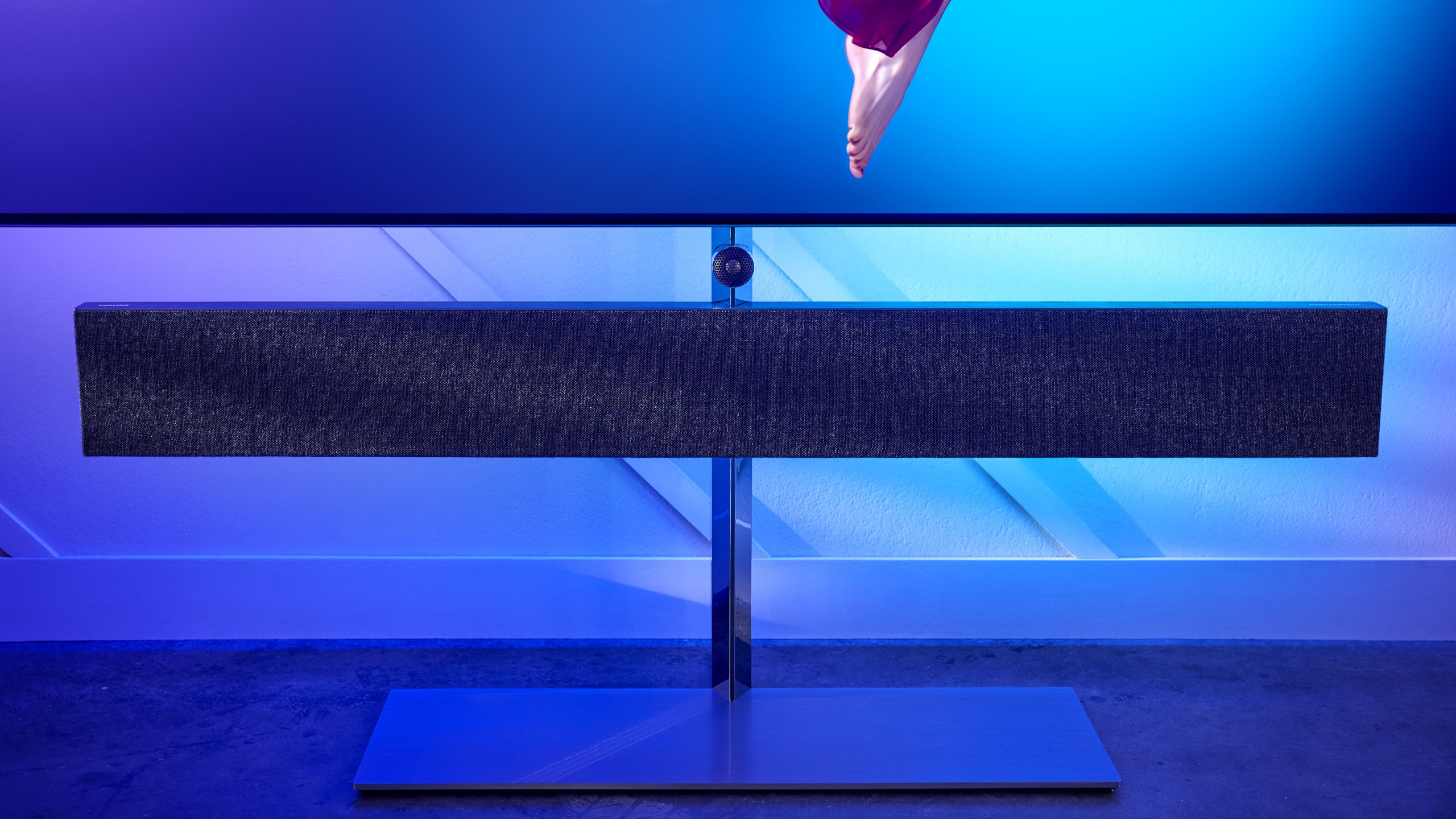
Passive speaker
Though, Bowes & Wilkins themselves believe that it is not a soundboard, but a speaker. An audio board has a built-in amplifier and digital processor, which steals precious cabinet volume. In our case, such entrails are in the TV itself, so that the entire cabinet is used for acoustics. It improves the bass response considerably, we must believe B&W.
In my eyes, it’s still a soundboard. It is divided into three sub-cabinets, for the right, left and center ducts. Isolating these prevents much of their interplay and coloring, resulting in cleaner and better separated sound. Each of the sub-cabinets has a reflective port, this is the golf ball pattern to provide better airflow and thus less audible turbulence. The outer case is reinforced with fiberglass to reduce resonances.
Each sub-cabinet has its own full-tone element, which is taken directly from B & W’s M1 satellite speakers. These are costly issues, and contribute to the increased price tag. The right and left treble elements are located at the very outside of each edge of the soundboard, for the widest possible sound image. The center channel tweeter is located separately on top of the cabinet. This for the purest possible overtones in the dialogues.
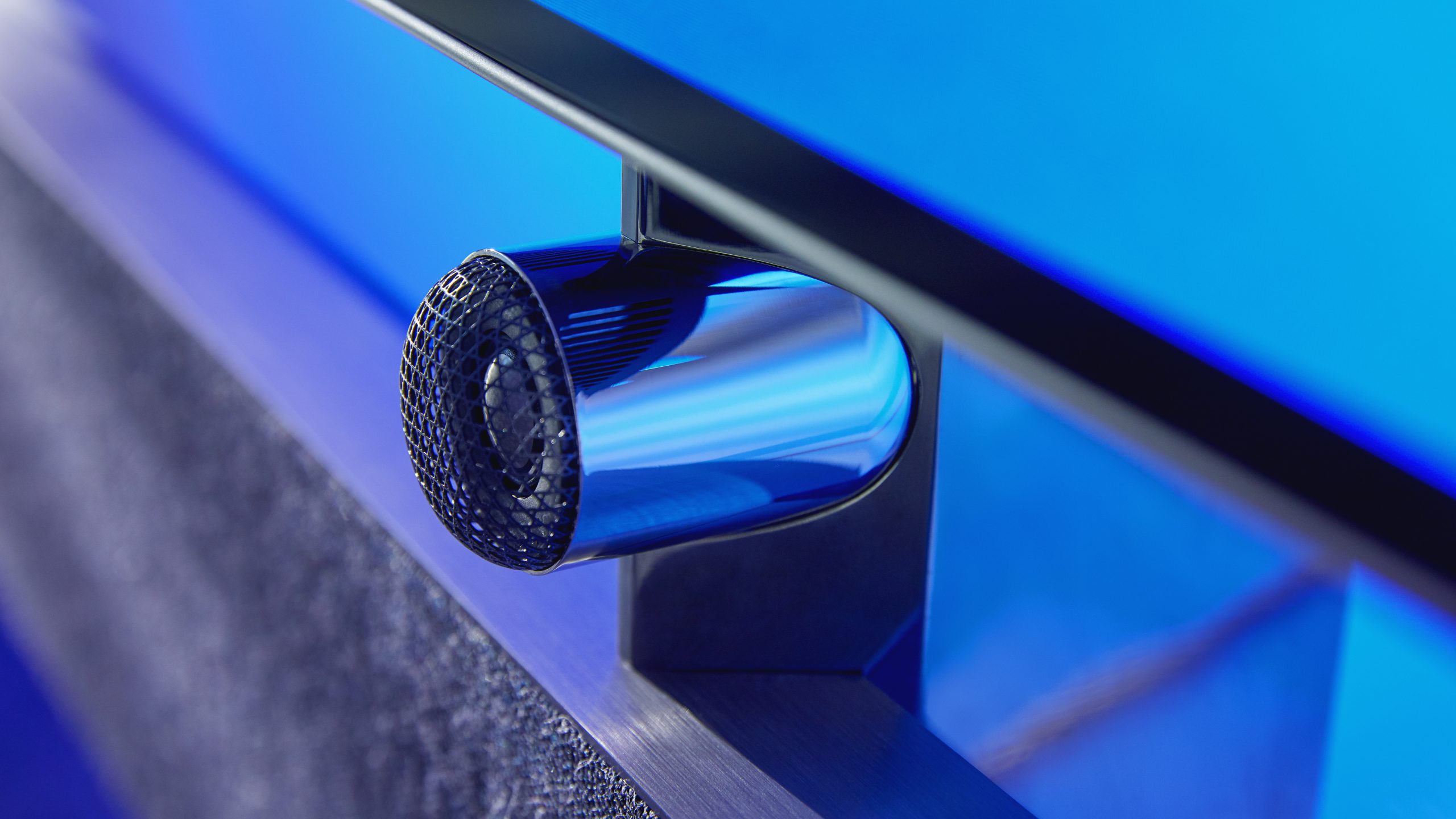
Subwoofer output
Should you not be happy with the bass from the soundboard, there is a subwoofer output for connecting an external subwoofer – for extra thrust and bouldering in the bass.
Beautiful design
Having mounted the TV on the included floor stand (wall stand is also included), I have to say that this is really a nice thing. The TV comes up to perfect eye level from the sofa, and the minimalist exterior makes the TV look less flashy than most other 65-inch. Despite the fact that the soundboard on the underside takes focus.
The installation itself was not difficult either, just follow the relatively simple operating instructions. And remember to be two at work, as a 65-inch TV will otherwise be tricky to handle.
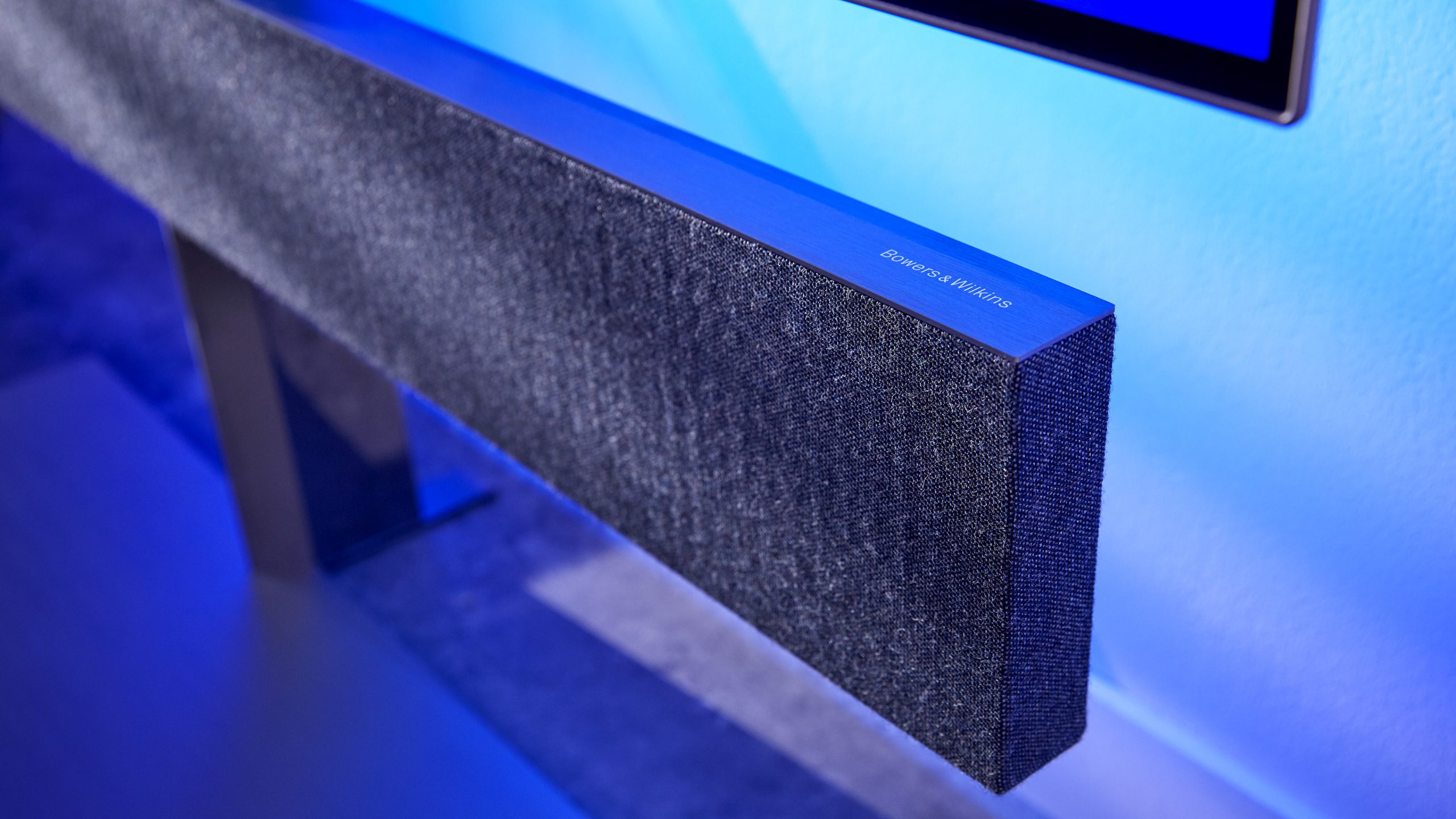
First time setup
The first time you turn on the TV, select the language, including Norwegian. Since the operating system is Android, sign in to your Google account to get the most out of it. Then simple functions can be voice-controlled via a Google Nest speaker, and since the TV has a built-in Chromecast, you can easily play over your favorite apps directly from your mobile. Whether it’s video or music.
The interface is intuitive and user-friendly. The fact that the remote control also has a QWERTY keyboard on the underside will remove frustration when entering passwords and stuff, but the remote control itself could have been a little flatter. And why does it not have a taillight?
One thing: When you turn on the TV for the first time, you are asked if it is wall-mounted or table-mounted, so the TV can adjust the sound accordingly. I must admit that I did not hear any difference, not even with pink noise, which will normally reveal even small differences.
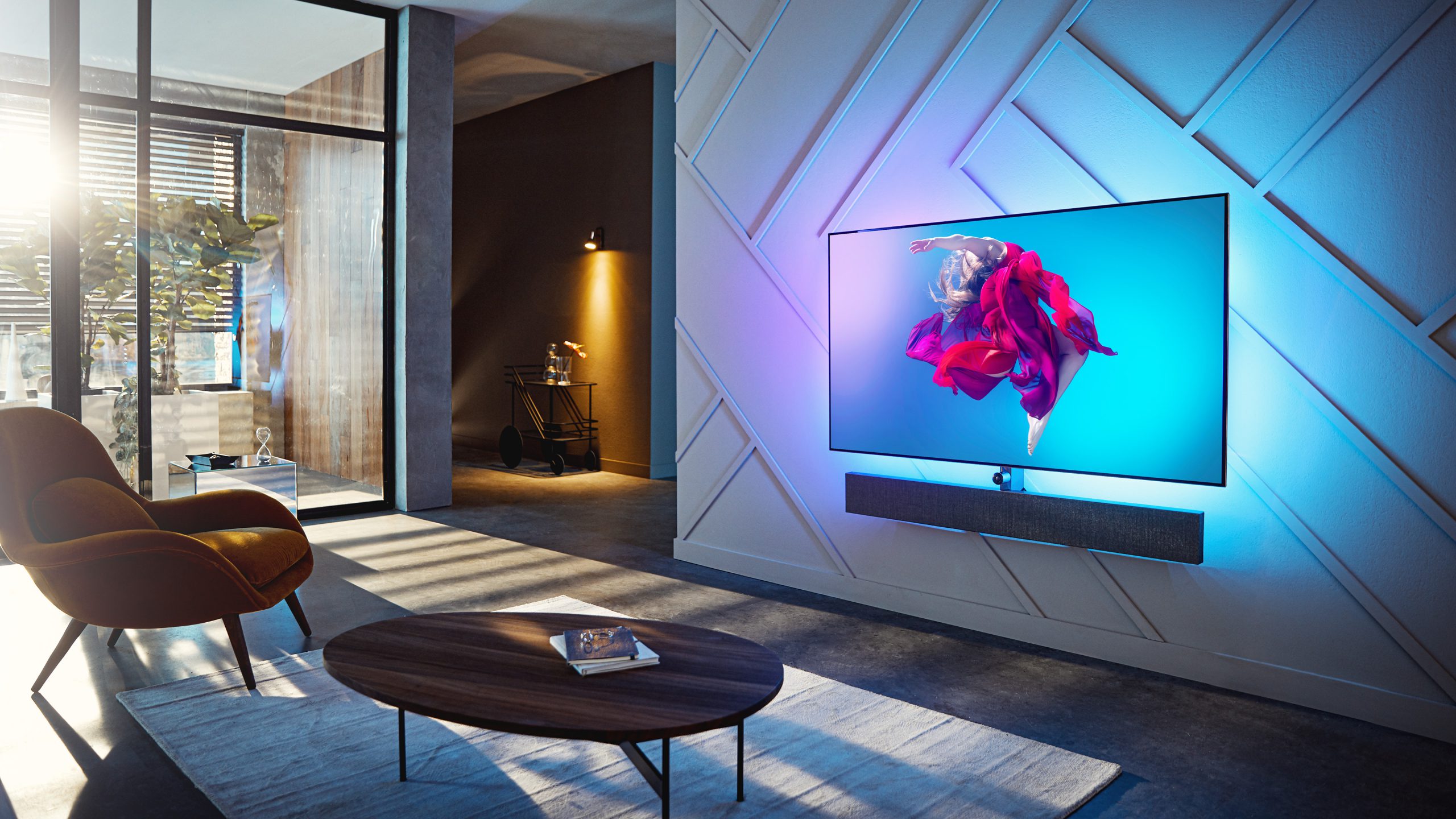
Frequent menu visits
Something that is a little strange on a TV where sound is in focus, is that you do not have sound selection directly on the remote control. To change the sound mode from Original to Movie or Music, first press Settings, then select Common settings, then Sound style, before finally switching. Knotete.
The same with picture, but instead of Sound style, you choose Picture style.
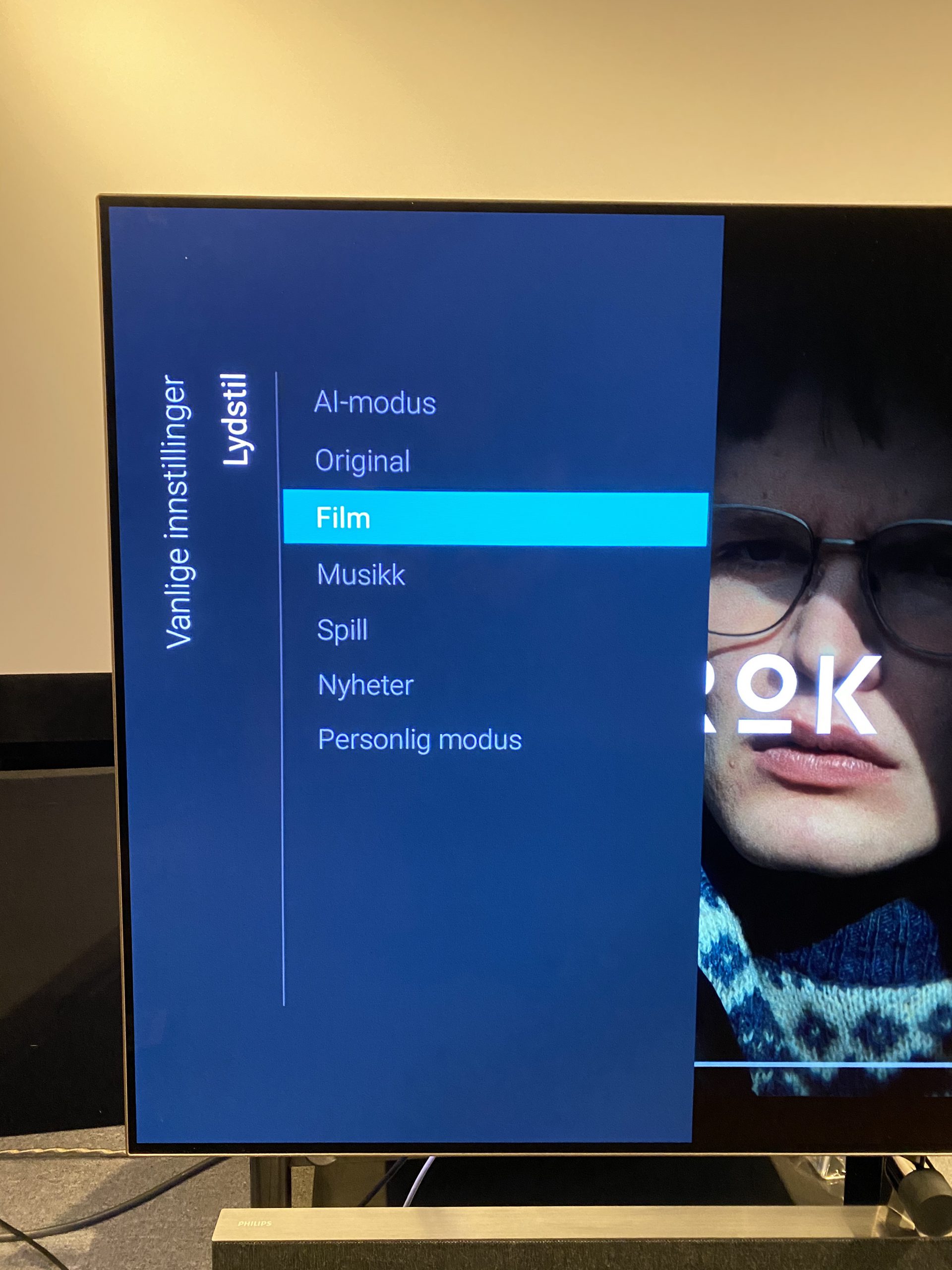
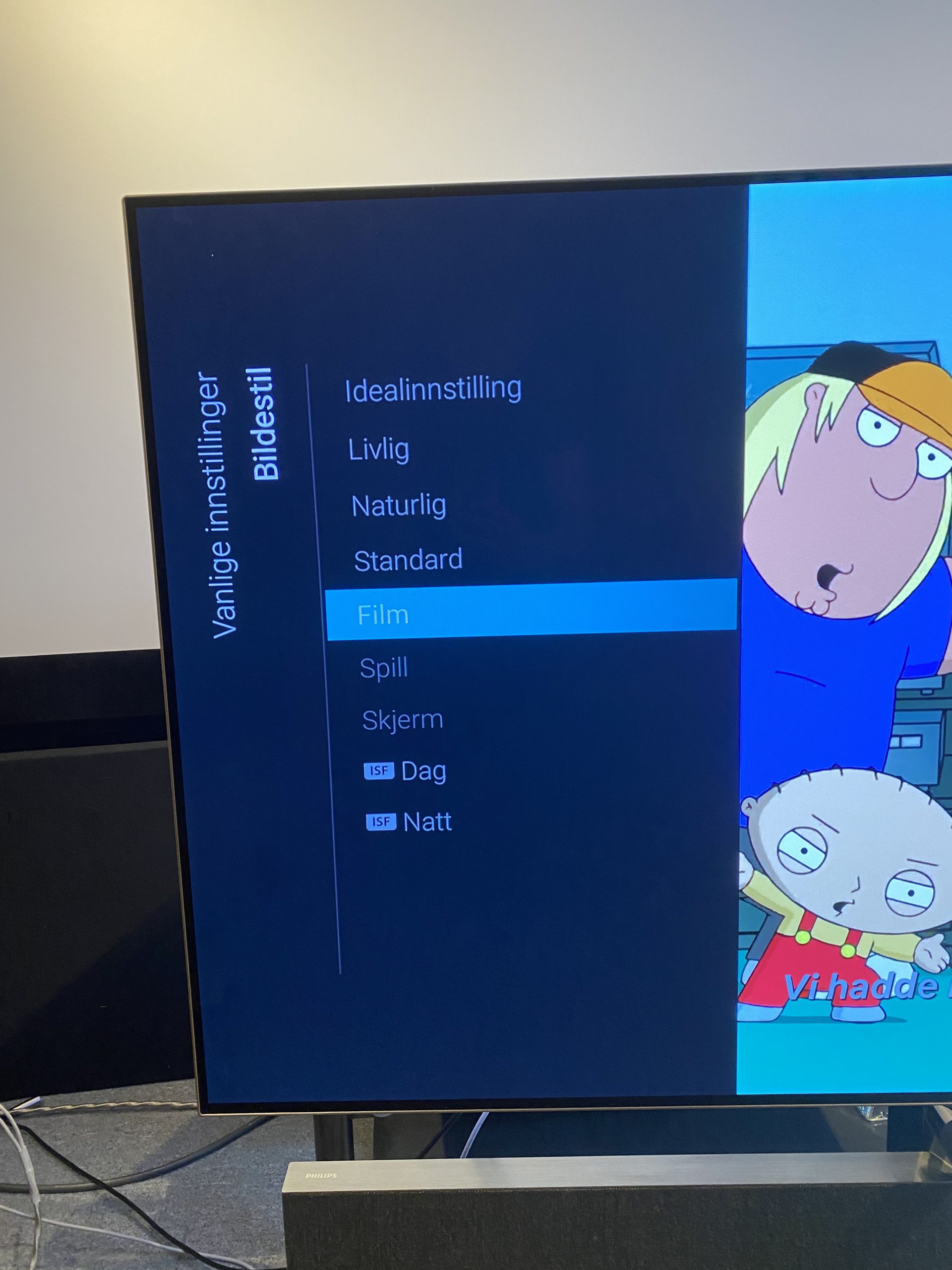
Sparkling pictures
I will not go so much into the image quality, then you can instead read Audun’s test of the 65OLED804, which has an identical image.
But the conclusion was that the Vivid mode that Philips itself recommends gives far too exaggerated colors and contrast, with a very high “loudness” factor. The Movie mode works better, and I myself prefer ISF Day when it is light in the room and ISF Night when it is dark. If it is not Dolby Vision content, where I alternate between Dolby Vision light and dark from the surroundings.
The Philips TV produces really sparkling images, and I can quickly fall for the Ambilight effect. When it is tidy in the living room. Because with this on and the light off, all of the clutter will light up along with the image. So be careful.
Dream sound
It is on sound quality that the TV stands out. And here I must say Philips and B&W have hit the mark. With the Film sound mode, the dialogues are impressively well separated from the rest of the sound image. The voices are ready in the World War II drama Fury from 2014, where Brad Pitt has a badass role as Sergeant Don Collier.
In addition to reproducing clear voices, the soundboard draws up an impressively large soundscape. Especially the one sitting in the middle will get a good impression of real surround sound, thanks to the treble elements’ wide separation as well as clever manipulation of phase.
The sound image is airy and dissolved, and there are good opportunities to amplify the sound. This is much better than I had previously thought, and in fact the built-in soundboard has some advantages over B & W’s own soundboard Formation Bar. The latter can admittedly be driven even harder before it starts to rattle in the bass, and the overall dynamics are also a little better on the Formation soundboard. But the Philips TV has a more airy treble reproduction and a larger and more inviting soundscape. In most cases, I would actually rather have this sound.
Great music
Also when you play music, the qualities come out. It gets a little over with Film mode, here I actually prefer better Original, which is without processing. Then the voices become a little more “trapped”, but in return the rhythm is better. The bass rhythms in pop music get more speed and speed, and there is better timing in the instruments. Also on acoustic music.
External subwoofer
The soundboard can come to a standstill when you gobble up too loud, and action movies can sound a bit tame if you are used to the sound from a proper home theater system.
This is where the subwoofer output comes in handy. A subwoofer such as the Sunfire HRS-8 will then add real deep bass and offer much more power to the movie sound. But the soundboard still plays the entire frequency range, so it will still crack if you play too loud. But it definitely adds weight and power to the sound. In a normal TV room, I still do not quite see the need, as the TV excels on its own.
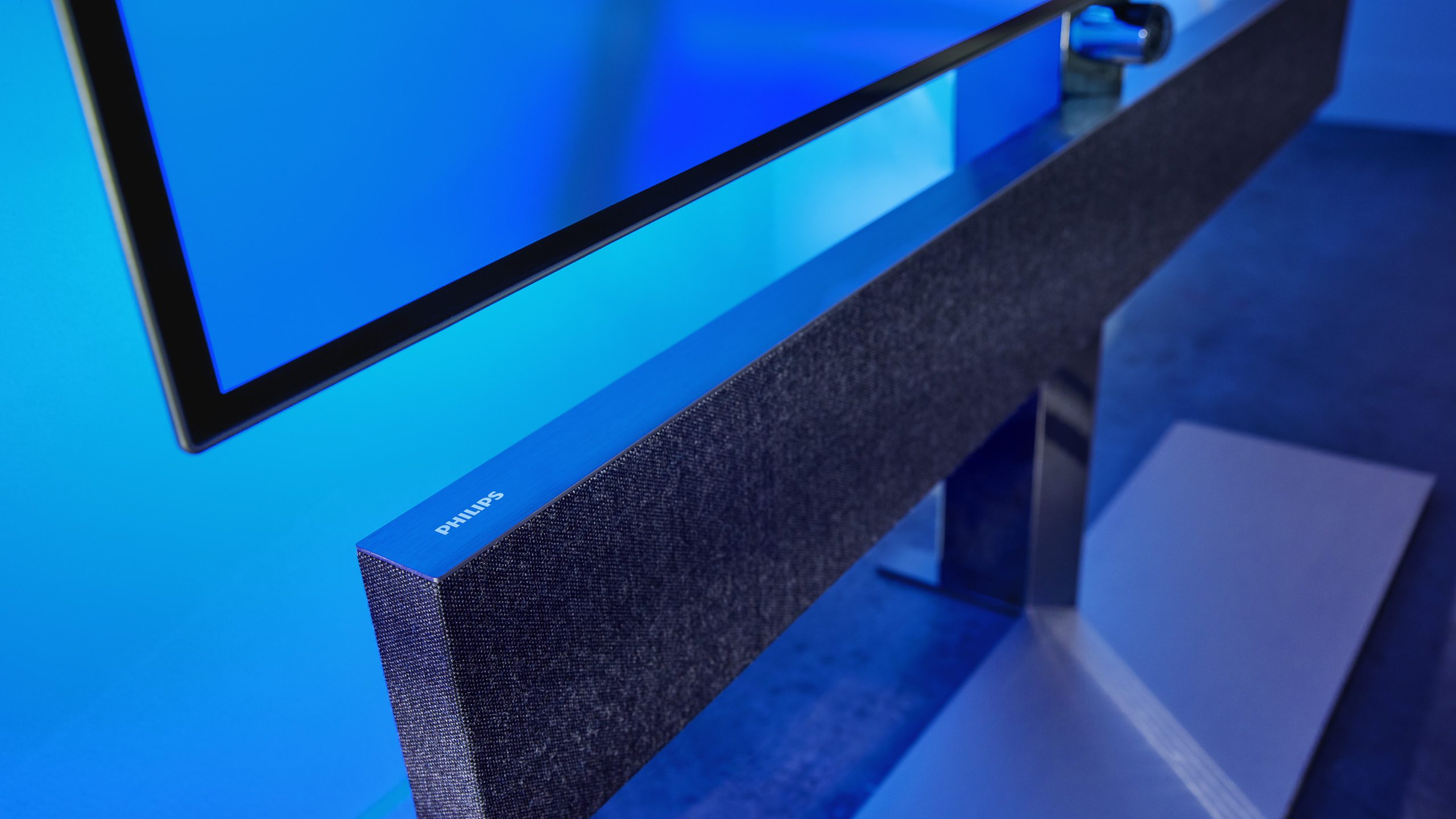
Philips OLED984: Conclusion
Philips OLED984 offers sparkling images, addictive Ambilight and beautiful sound quality.
The question one has to ask is whether this top model is worth the extra 2500 over the most affordable OLED804, when one knows that the image quality is equal. The answer is twofold.
If, on the other hand, you are the type who does not raise an eyebrow when you see a beautiful interior lamp for 1000 bucks but rather pulls the card, then I would think OLED984 does at least as much for the interior as a great lamp. And then you get all this fun as well. In that sense, the choice is quite simple anyway.

We think
The sound from B&W is in a class of its own for TVs, and the design is raw. The raw contrast of OLED combined with Ambilight ambient light elevates the mood. Slightly bulky remote control. Taillights would help. Some exaggerated colors.
4999 €
Specifications
- Size / type: 65 ”4K OLED
- Resolution: 3840 × 2160 (4K Ultra HD)
- Operating System: Android Pie (9.0)
- Inputs: 4 HDMI (2.0b), 3 USB
- Outputs: Optical digital audio output
- HDR: HDR10 +, Dolby Vision
- Other: Four-sided Ambilight, soundboard from B&W
- Web: philips.com

